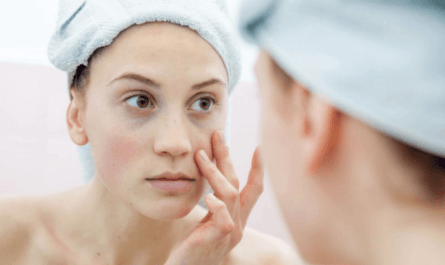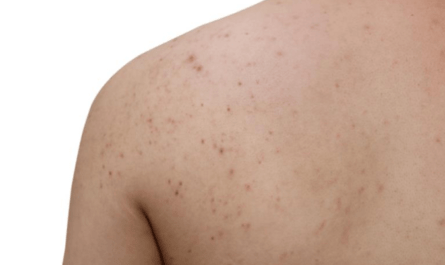Moles are a common occurrence on our skin, and while they may seem harmless, they can also be a cause for concern. These small, dark spots can appear anywhere on the body and are usually no bigger than the size of a pencil eraser.
While most moles are benign and harmless, some can indicate a more serious condition. It’s important to understand the different types of moles and what to look out for so that you can take the necessary precautions to protect your skin.
In this article, we will explore the different types of moles, their causes, and how to identify any warning signs that may indicate a more serious condition. So, whether you’re simply curious about moles or need to know more about protecting your skin, keep reading to learn everything you need to know about moles on your skin.
What are Moles?
Moles are common skin growth and usually appear as small dark brown spots. They typically occur when the pigment cells suddenly grow abnormally. Moles can appear alone or in groups on any part of the skin. The appearance of the mole can be different from one person to another. Some may have flat and dark moles, while others will have protruding moles that are light-colored.
Moles usually appear in childhood and adolescence. Some moles may turn black during adolescence and pregnancy due to sunlight. Moles on the skin are the result of clusters of melanocytes. These cells can make natural colors and protect the skin from ultraviolet radiation.
Studies have found that most moles are harmless, and they rarely become cancerous. However, in rare cases, it may be a symptom of melanoma skin cancer. So you need to monitor for abnormal moles, bumps, and pigmented spots. Ordinary moles on the skin have a smooth surface, uniform color, clear edges, and a diameter of about 5-6mm. Compared to normal moles, cancerous moles have a specific look and tend to change in shape, color, and size.
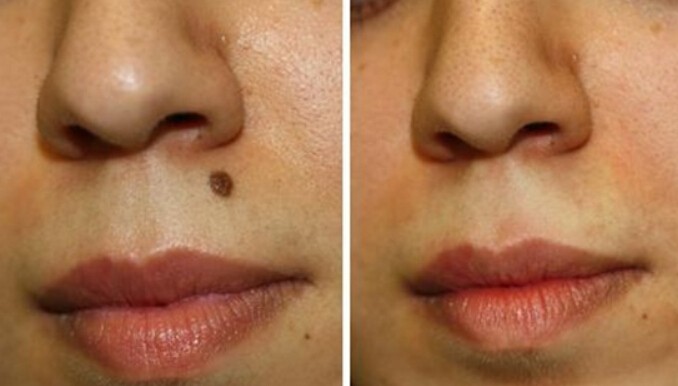
The Main Causes of Moles on Skin
There are various reasons why some people have more moles than others. If you have a lot of moles, these are the possible reasons:
1. Sun Exposure: Prolonged sun exposure is the leading cause of moles on the skin. UV radiation from the sun causes pigment cells to cluster together and form a mole. People with lighter skin are more prone to developing moles due to their higher sensitivity to the sun.
2. Genetics: Genetics can also play a role in the formation of moles. If a family member has moles, then the chances of you developing moles are higher.
3. Hormones: Hormonal changes can also cause moles to form. People going through puberty and pregnancy often experience an increase in the number of moles on their skin.
4. Skin Injury: Injury to the skin can cause moles to form. The trauma to the area can cause pigment cells to cluster and form a mole.
5. Infection: Certain infections, such as HPV and molluscum contagiosum, can cause moles to form. These infections can cause the formation of a mole due to an increase in melanin production.
6. Medication: Some medications, such as corticosteroids and cyclosporine, can cause moles to form due to increased melanin production.
7. Age: As people age, the number of moles on their skin tends to increase. This is due to years of sun exposure and the body’s natural aging process.
Types of moles on the skin
There are many types of moles, the common types are:
1. Junctional Nevi: Junctional nevi are usually flat, tan to dark brown moles that can appear anywhere on the body. They are composed of melanocytes, the cells that produce the dark pigment in the skin.
These moles may have irregular borders, and their color may vary from light to dark. When they become bigger than a quarter of an inch in diameter, they are likely to be monitored for changes by a dermatologist.
2. Compound Nevi: Compound nevi are usually slightly raised, have a distinct border, and are a tan or brown color. Unlike other types of moles, these moles are composed of melanocytes and other skin cells. They may become raised and darker in color over time and can be found on any area of the body.
3. Intradermal Nevi: Intradermal nevi are usually raised with pink, red, or tan color. They are composed of only melanocytes and are usually smaller than a quarter of an inch in diameter. These moles may darken in color or become raised over time and typically appear on the torso, arms, and legs.
4. Dysplastic Nevi: Dysplastic nevi are often larger than a quarter of an inch in diameter and have an irregular shape. They are usually flat or slightly raised and may have a variety of colors, including tan, brown, black, or red. These moles can be found anywhere on the body and are often considered precancerous.
5. Atypical Moles: Atypical moles are usually larger than a quarter of an inch in diameter and have an asymmetrical shape. They often have a dark brown to black color with a mixture of tan, pink, or red. These moles may be more likely to become cancerous and should be monitored closely.
What Do Moles Look Like? (Picture of Moles on Skin)
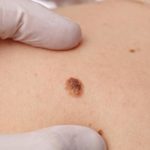
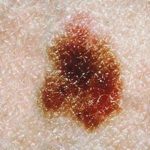
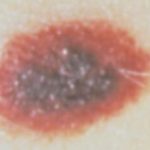
Top 10 Home Remedies to Get Rid of Moles on Skin
The number one reason people use home remedies instead of the usual treatments is the expenses they have to pay. Although it may take longer to obliterate the mole, home remedies are also helpful.
1. Apple Cider Vinegar
This list will not be complete without the ACV, considered one of the most sought-after home remedies.
Apple cider vinegar is acidic and can dry out moles. You will find that the mole becomes dry, scabs, and disappears after some time.
- Dip a cotton ball in ACV.
- Place the cotton ball on top of the mole.
- Leave on the skin for about 5 hours.
- You would need to do this until the mole starts to form a scab.
- After some time, the mole will remove on its own.
2. Banana Peel
If you like bananas, throw away the peel. Then you missed an effective way to remove moles on the skin. Banana peel contains some natural acids and enzymes, which can effectively eliminate moles.
- Place a small piece of a banana peel on the mole.
- Make sure that the inside of the banana peel faces toward the mole.
- Place a bandage over the banana peel.
- Leave on the affected portion overnight.
3. Garlic
You may not like the smell of garlic. But it is effective for various skin problems. Allicin in garlic is rich in nutrients, including saturated fat, vitamins, and trace minerals such as iodine, sulfur, and chlorine. These substances can help remove moles and spots on the skin.
- Crush a garlic clove to make a paste.
- Apply the paste to the mole.
- Leave it on the mole overnight.
- This can be done every day for about three weeks to remove the mole successfully.
4. Iodine
You may use this when you want your wounds to get better, but this time, you can also immediately get rid of your moles. Iodine will be able to dry out the area of the mole so that the mole will eventually fall off your skin.
- Apply a drop of iodine and place it directly on the mole.
- You need to ensure that the iodine will not affect the surrounding area or the skin around the mole.
- This can be done twice a day for a week before you can start seeing results.
5. Lemon Juice
If you have always loved lemonade, you will commonly have a lot of lemons at home. You can use lemons to get rid of the lemon efficiently. This is meant to make your mole lighter before it scabs and falls off your skin. This is slightly different from all other remedies that will make the mole darker before it falls off.
- Dip a cotton ball in lemon juice and place it directly on the mole.
- Place tape on the cotton ball.
- Leave on the skin for about 20 minutes.
- You can do this once or twice a day.
6. Tea Tree Oil
Tea tree oil is also one of the standard methods to eliminate moles on the skin. People have been using it for hundreds of years to treat various skin problems.
It has astringent properties and can make moles dry, scab, and fall off on their own. In addition, tea tree oil is natural without any side effects.
- You must place a small piece of cotton dipped in tea tree oil directly over the mole.
- Place a bandage on it to keep the mole in place.
- Keep on the affected skin area for as long as you can.
7. Coconut Oil
Many people consider coconut oil one of the main staples they should have at home. There is no doubt that coconut oil is going to be helpful for a lot of purposes. This time, it can help get rid of your moles on the skin.
Coconut oil contains a kind of fat known as “medium-chain triglycerides.” This can improve the skin and allow the skin to get rid of the moles naturally.
- Just place a drop of coconut oil on the mole.
- Leave it on the mole and go about with your errands as usual.
- You can try this method twice daily, once in the morning and once at night.
- You will start seeing the results after a week.
8. Aloe Vera
What do you know about Aloe Vera? Most people know Aloe Vera can help make your hair longer and thicker. But you may not know that aloe vera can also help remove moles on the skin.
Aloe Vera contains Aloe vera gel that will allow it to improve your skin’s natural radiance. This takes longer to eliminate moles than the other items listed here.
- Clean the area beforehand to prepare it for mole removal.
- Apply fresh Aloe Vera gel to the mole.
- Cover the mole with a bandage.
- Leave the bandage on the mole for about 3 hours.
9. Onion Juice
Onion Juice can provide a painless way to remove moles on the skin without surgery. Onions contain natural acids that can make the mole fall off easily. This is safe to use, and you will have no problems with it if you are not allergic to onion’s natural acids.
- Grate the onion and get its juice.
- Apply the onion juice to the mole.
- Leave the onion juice in the affected area for an hour.
- Rinse off with water.
10. Pineapple Juice
You can expect to do different things with pineapple juice, and one of these things is mole removal. Pineapple juice contains high levels of citric acid, which can help remove the moles from your face quickly.
If you applied the pineapple juice to the mole regularly, this would make the mole disappear.
- You can get a small slice of pineapple and place it in the affected area.
- Leave the juice on the mole for a few minutes.
- Wash it off.
- It would help if you did this regularly to make the mole disappear completely.
You can use different home remedies to remove the moles from various parts of your body effectively. Some may work better than others, so make the right choice.
What’s the difference between moles and skin tags?
Moles and skin tags are two different types of skin growths that can be found on the human body. They can look similar but have distinct characteristics that separate them.
Moles are typically round or oval-shaped and are usually brown or black in color. They can range in size from a few millimeters to several centimeters. Moles result from a cluster of melanocytes, cells that contain the pigment melanin. They can be found anywhere on the body but are most commonly seen on the face, arms, and back.
Skin tags are small, soft, flesh–colored growths that hang from the skin. They are usually a few millimeters in size and are usually painless. Skin tags are made of collagen and blood vessels and are usually found on the neck, armpits, or groin area. Unlike moles, skin tags are not caused by a buildup of melanin but instead are caused by friction or rubbing of the skin.
In conclusion, while moles and skin tags may look similar, they are two distinct types of skin growth. Moles are usually round or oval-shaped and caused by a buildup of melanin, while skin tags are usually small, soft, and flesh–colored and caused by friction or rubbing of the skin. Both are typically harmless, but if you are concerned about any changes in your skin, it is best to consult a doctor for advice.
How to Prevent Moles on Skin?
To prevent more moles from developing on your skin, here are a few tips to remember:
Skin protection: Studies have found that ultraviolet radiation is associated with an increased risk of melanoma. If you need to stay in the sun, ensure you are well protected.
You can choose long-sleeved clothes, UV-protective clothing, sunglasses, and a wide-brimmed hat to protect your skin. In addition, avoid tanning lamps and sunbathing, increasing UV exposure and the risk of skin cancer.
Choose the right sunscreen: You need to apply sunscreen for 30 minutes before going out. Choose a broad-spectrum sunscreen with an SPF of at least 30, which can effectively prevent ultraviolet radiation. You must reapply every two hours during outdoor activities such as swimming and running.
Limit sun exposure: The sun’s rays are usually strongest between 10 am and 4 pm. If you need to go out for activities, try to avoid this period, even in winter or cloudy days.
Check your moles: Check your moles frequently. Changes in the appearance of the mole may indicate that it is cancerous. If you find something unusual, you need to seek medical help immediately.
Exfoliation: One of the leading causes of moles is the accumulation of dead skin cells on the skin. Using a scrub to exfoliate can help prevent moles on the skin.


